Best 3 Person Tent For Backpacking Lightweight 2024
Last Updated: April 5, 2024
Choose a lightweight 3 person tent for backpacking optimized for area-to-weight ratio
Upgrading to a lightweight 3 person tent for backpacking is the best way for two hikers to camp in luxury by themselves, use wide pads, bring a kid/dog, or cram in a third adult as needed. Compared to their 2P siblings, 3P tents tend to have a higher volume-to-weight ratio, and offer significantly more interior space, often for only a small weight increase.
The downside? Most 3 person tents are actually better thought of as 2.75 person tents because they feel very cramped when used at max capacity. For sleeping three full-size adult backpackers and storing their gear, we strongly recommend a tent sized for four people, or separating out into two smaller 2p tents.
This guide covers what we believe are the best lightweight and ultralight 3 person tents for backpacking, many of which we have tested in the backcountry, while others are included based on positive experiences with their 2P versions. As a heuristic, we recommend avoiding 3P tents weighing more than four pounds unless they are exceptionally spacious. Budget constraints aside, you should never settle for carrying anything over five pounds while lighter options like these are readily available. Your back and legs will thank you!
We also cover backpacking tents sized for two, ultralight freestanding tents, crossover tents, 1 person backpacking tents, 4 person backpacking tents, pyramid tents, and backpacking tarps.
You make Adventure Alan & Co possible. When purchasing through links on our site, we may earn an affiliate commission at no additional cost to you. Here’s why you can trust us.
Quick Picks: Best 3 Person Tent for Backpacking
- Best All-Around: Big Agnes Copper Spur HV UL3
- All-Around Runner Up: NEMO Dragonfly OSMO 3
- All-Around Runner Up: MSR Hubba Hubba 3
- Most Bomber: SlingFin Portal 3
- Best Lightweight: NEMO Hornet OSMO Ultralight 3
- Lightweight Runner Up: Big Agnes Tiger Wall 3
- Best Ultralight: Zpacks Offset Trio
- Ultralight Runner Up: Zpacks Triplex
- Ultralight Runner Up: Hyperlite Mountain Gear UltaMid 4
- Best Value: REI Co-op Half Dome SL 3+
- Value Runner Up: NEMO Mayfly OSMO 3
- Best Budget: Sierra Designs Meteor 3
3 Person Tent Comparison Table
Mobile users rotate for full-width table view
| Tent | Price ($) | Weight (oz) | Height (in) | Int Area (ft²) | Vest Area (ft²) | Area/Pound (ft²) |
| Sierra Des. Meteor 3 | 320 | 78.0 | 42 | 40.8 | 18.0 | 12.1 |
| REI Half Dome SL 3+ | 399 | 77.0 | 44 | 48.8 | 22.5 | 14.8 |
| NEMO Mayfly OSMO 3 | 460 | 58.0 | 42 | 39.7 | 17.2 | 15.7 |
| Big Agnes Tiger Wall 3 | 500 | 42.0 | 42 | 38.0 | 16.0 | 20.6 |
| NEMO Hornet 3 | 550 | 45.0 | 44 | 39.7 | 17.2 | 20.2 |
| NEMO Dragonfly 3 | 580 | 53.0 | 44 | 41.2 | 20.0 | 18.5 |
| Big Agnes Copper Spur 3 | 580 | 56.0 | 43 | 41.0 | 18.0 | 16.9 |
| SlingFin Portal 3 | 600 | 60.0 | 44 | 41.5 | 20.6 | 16.6 |
| MSR Hubba Hubba 3 | 630 | 55.0 | 46 | 39.5 | 15.0 | 15.9 |
| Zpacks Triplex | 799 | 21.0 | 48 | 37.5 | 16.2 | 40.9 |
| HMG UltaMid 4 | 849 | 22.4 | 75 | 85.0 | 0.0 | 60.7 |
| Zpacks Offset Trio | 899 | 22.9 | 48 | 41.9 | 12.5 | 40.1 |
Best 3 Person Tents For Backpacking
Big Agnes Copper Spur HV UL 3 Person Tent
It’s a sweep! The Big Agnes Copper Spur series is our favorite lightweight freestanding tent in all size capacities, including 1P, 2P, 3P, and 4P! This tent is just so well-made, so well-rounded, so lightweight, and still fully-featured. Its ceiling height, interior area, and vestibule size are all about average in the 3p tent category, which is impressive given that it weighs less than average. While even lighter tents exist, none of them are freestanding nor do they have as many features.
Enjoy near vertical side walls and a very steep head wall – there’s lots of usable headroom to sit up in! We also dig the convertible awning vestibules for nights that are both warm and wet and a host of interior mesh pockets for gear storage. Big Agnes Copper Spur HV UL 3 is truly an exceptional tent, the gold standard.
- Price: $580
- Weight: 56.0 oz
- Interior Area: 41.0 ft²
- Vestibule Area: 18.0 ft²
- Area/Pound: 16.86 ft²
- Height: 43 in
- Fly Material: Sil Nylon
- Compared to 2P version: 41% larger interior, 7.5% taller, 30% heavier
- Pros: Lightweight. Freestanding. Full size awning vestibule. Great interior storage pockets. Vents. Vertical side walls and head end wall. Good headroom.
- Cons: Not ultralight.
NEMO Dragonfly OSMO 3
It’s clear to us that NEMO designed the Dragonfly OSMO to be a Copper Spur killer. On paper, it has slightly more interior area, slightly larger vestibules, a slightly taller ceiling, slightly lower weight, and slightly smaller price tag. All very impressive! So while they certainly designed a great tent with great stats, we don’t think it it has quite the backcountry performance or proven track record to surpass our beloved Copper Spur just yet.
Primarily, that’s because of the semi-sloping side walls, which reduce usable headroom and prevent three occupants from sitting up at once. Though to be fair, many tents are significantly worse offenders when it comes to side wall slope than Dragonfly, and to its credit, the head and foot end walls are both quite vertical. Also, note the scooped rain fly at the head, which helps with venting, but decreases storm-worthiness.
Upgrading from Dragonfly 2 to Dragonfly 3 is a pretty good exchange of weight for space. We dig the proprietary OSMO fly fabric, which blends both recycled polyester and recycled nylon in a way that yields a highly waterproof performance and hardly sags or stretches when wet. And like Copper Spur, the interior is fully decked out in pockets. What a great tent, all things considered!
- Price: $580
- Weight: 53.0 oz
- Interior Area: 41.2 ft²
- Vestibule Area: 20.0 ft²
- Area/Pound: 18.48 ft²
- Height: 44 in
- Fly Material: OSMO recycled nylon-polyester blend
- Compared to 2P version: 42% larger interior, 7% taller, 26% heavier
- Pros: Lightweight. Freestanding. Large vestibules. Good interior storage. Sustainable. OSMO Fabric has minimal sag/stretch.
- Cons: Not ultralight. Semi-sloping side walls. Scooped rain fly at head end. No built in vents.
MSR Hubba Hubba 3 Person Tent
The MSR Hubba Hubba 3 is another great all-around, freestanding, lightweight, 3 person tent for backpacking. What’s more, it offers one of the juiciest upgrade opportunities from 2P to 3P, in the sense that it is only 20% heavier for 36% more interior area and 15% extra ceiling height. That’s exceptional and the reason you’re reading about it in our 3P list, rather than our 2P list.
We love how Hubba’s chassis is fully rectangular, and completely symmetrical, none of this tapering at the foot end. Unlike most cross pole setups, Hubba has a singular ridgeline plus spreader bar that forks to the corners. This results in a completely vertical head and foot end wall (great!) but sloping corners (not great!). And also unlike most other tents, a majority of its canopy is ripstop nylon, rather than bug mesh. This massively improves draft resistance and is good in wind and snow, but worse in warm conditions when breathability is desirable. Like most premium 3P tents, it has good interior stash pockets.
Hubba Hubba 3 is a great 3 person tent, but the combination of small vestibules, sloping corners, and a less breathable canopy are why we have it in the runner up category.
- Price: $630
- Weight: 55.0 oz
- Interior Area: 39.5 ft²
- Vestibule Area: 15 ft²
- Area/Pound: 15.85 ft²
- Height: 46 in
- Fly Material: Sil Nylon
- Compared to 2P version: 36% more interior area, 15% taller, 20% heavier
- Pros: Lightweight. Fully free-standing. High ceiling. Symmetrical. Great upgrade from 2P to 3P. True rectangular floor (not tapered). Interior pockets. Nylon canopy blocks drafts & spindrift.
- Cons: Not ultralight. Expensive. Small vestibules. Nylon interior canopy is less breathable in warm weather. Sloping corners.
SlingFin Portal 3
Simply put, SlingFin makes the most stormworthy tents on the market, and Portal 3 is no exception. While the brand specializes in mountaineering and winter camping designs, their 3+ season Portal backpacking tents are the most wind resistant we’ve used. And it’s all thanks to the engineering-centric construction, burly 9.3mm DAC Featherlite NFL poles, and internal guylines that reduce lateral torsion.
But there’s lots more to love about Portal 3 than its sturdiness. The spreader bar and internal mesh pockets increase usable headroom, and keep the interior clutter free. Add cross-ventilation by placing the KickStand vent struts into the fly door. SlingFin has conducted significant fabric testing, and the result is their double silicone (sil/sil) treated 10d nylon ripstop fly material, which is stronger, more waterproof, and longer lasting than the industry standard SIL/PU. Portal 3 compared to Portal 2 is also a pretty solid upgrade, offering 51% more interior area for only 30% more weight.
- Price: $600
- Weight: 60.0 oz
- Interior Area: 41.5 ft²
- Vestibule Area: 20.6 ft²
- Area/Pound: 16.6 ft²
- Height: 44in
- Fly Material: Sil/Sil Nylon
- Compared to 2P version: 51% more interior area, 0% taller, 30% heavier
- Pros: Bomber storm-worthiness. Great headroom, near vertical side walls. Premium fly fabric. Good internal pockets. Full size vestibules. Tons of guy out points. Spare zippers.
- Cons: Expensive. Mid-weight. Unusual tensioning hardware takes getting used to.
Best Lightweight 3 Person Tent For Backpacking
NEMO Hornet OSMO Ultralight 3 Person Tent
Thanks to its low weight, premium fabric, and significant headroom improvements over its 2P sibling, the NEMO Hornet OSMO Ultralight 3 is our favorite lightweight 3 person tent for backpacking. The namesake OSMO fabric is comprised of a proprietary blend of recycled nylon and polyester, deriving each fabric’s benefits to create an end product that is sustainable, extra waterproof, and with 3x less sag/stretch than traditional tent fabrics.
On paper, upgrading from a 2p Hornet to a 3P Hornet for 2p-use isn’t the most appealing, given that it’s 36% heavier. However, you do get a significant size increase – 44% more interior area. But the biggest upgrade comes from the spreader bar, which is not present in the 1p and 2p versions, and why we like the 3p so much more for that reason. That being said, the usable headroom goes from poor to decent, but by no means exceptional.
Part of what keeps Hornet’s weight down is the semi-freestanding pitch. It has to be staked out at the foot end to be fully taut, but we’ve rarely ever found this to be an issue in the field. Overall, the Hornet 3 is an inspired tent, and we’re impressed by how much better it feels to camp in than the 2p version. And did we mention the immaculate user reviews?
- Price: $550
- Weight: 45.0 oz
- Interior Area: 39.7 ft²
- Vestibule Area: 17.2 ft²
- Area/Pound: 20.2 ft²
- Height: 44 in
- Fly Material: OSMO recycled nylon-polyester blend
- Compared to 2P version: 44% larger interior, 13% taller, 36% heavier.
- Pros: Very lightweight. Sustainable. Vertical headwall. Tall bathtub floor walls. OSMO Fabric has minimal sag/stretch. Good upgrade opportunity over 2p version. Exceptional user reviews.
- Cons: Semi-freestanding. Sloping sidewalls. Scooped head-end rain fly coverage. Low foot end ceiling.
Big Agnes Tiger Wall UL 3
The Big Agnes Tiger Wall UL 3 is one of, if not the lightest semi-freestanding 3 person tent for backpacking. And it’s another 3p model that stands out as a worthy upgrade investment over the 2p model for more room to spread out in. It’s only 20% heavier than its smaller sibling, but 36% larger! This is especially nice, given the Tiger Wall series tends to have a smaller interior area to begin with.
We love Tiger Wall for it’s near vertical side walls and head wall, offering great overall ceiling space. Many tents in the lightweight semi-freestanding category tend to have very sloping walls, and this being the exception is why it’s one of our favorite lightweight models.
That being said, something had to be sacrificed for all of that weight savings, and in this case, it’s wind-resistance and durability. The high ceiling and tall side walls, combined with the single ridgeline pole mean this one bears the brunt of the wind poorly. If you have stormy weather in the forecast, or frequently camp in strong winds, we recommend choosing a different 3 person tent. But for calm to moderate conditions, its hard to beat this lightweight of a tent, especially considering the price tag, which while high, is lower than average among premium models.
- Price: $500
- Weight: 42.0 oz
- Interior Area: 38 ft²
- Vestibule Area: 16 ft²
- Area/Pound: 20.6 ft²
- Height: 42 in
- Fly Material: Sil Nylon
- Compared to 2P version: 36% larger interior, 8% taller, 20% heavier.
- Pros: Very lightweight. Good headroom. Good value. Near vertical side wall and head wall.
- Cons: Not ultralight. Semi-freestanding. Middling wind resistance. Delicate zippers. modest durability. Low bathtub walls.
Best Ultralight 3 Person Tent For Backpacking
Zpacks Offset Trio
With a massive interior area-to-weight ratio, voluminous usable headroom, Dyneema construction, and unique asymmetrical offset pitch supported by dual end struts, Zpacks Offset Trio is likely the best performing and most ultralight 3 person tent for backpacking that we’ve ever covered. Aside from its eye-popping price tag, Offset Trio is almost strictly better than its predecessors, the Triplex and Triplex Zip.
It’s the offset ridgeline, bumped closer to the headend, that adds significant headroom above where users sit up. This significantly decreases the likelihood of brushing your head against condensation on the interior, a classic downside for all single-walled tents.
We almost can’t stress enough how large this tent is relative to its miniscule 22.9 oz weight. Hypothetically, you could carry two Offset Trios for the same weight or less than nearly any other tent on this list. And it’s interior is actually larger than average, compared to the field. What an incredible design!
There are downsides though. First off, the price tag is simply massive. Secondly, it’s a single wall trekking pole shelter; this means extra setup steps and increases likelihood of brushing against condensation. Third and finally are its small vestibules, which barely have room for one pack per side and are much better suited for shoe storage. The good news is that the interior is large enough to store packs inside at your feet, because the entire tent is nearly 8′ long.
Read more in our full-length Zpacks Offset Trio review.
- Price: $899
- Weight: 22.9 oz
- Interior Area: 41.9 ft²
- Vestibule Area: 12.5 ft²
- Total Area/Pound: 40.1 ft²
- Height: 48″
- Fly Material: Dyneema
- Compared to 2P Version: 33% larger interior, 0% taller, 16% heavier.
- Pros: Ultralight. Massive interior is long/wide. High area-to-weight ratioExcellent headroom. Best-in-class materials. Durable floor. Vents. Magnetic door roll-ups. Sturdy in wind.
- Cons: Very expensive. Not freestanding. Small vestibules. Dual end strut adds extra setup. Head-end storm door cannot be rolled up.
Zpacks Triplex
The classic Zpacks Triplex is our pick for second best ultralight 3 person tent for backpacking, behind only the Offset Trio. And like Offset Trio, it’s miles ahead of the freestanding and semi-freestanding crop when it comes to area-to-weight ratio and high performance Dyneema composition.
Compared to Offset Trio, Triplex is $100 less expensive, easier to pitch, has larger vestibules, is a tad lighter weight, and is much more thoroughly trail tested. However, it also has a smaller interior, less headroom, and perhaps inferior wind resistance.
For actual 3P use, we definitely recommend sticking to the wider, longer, and overall more spacious Offset Trio. But for 2P spreading out, classic Triplex could save you $100. Consider also the Triplex Zip, which adds peak vents, zippered storm doors, and magnetic roll-ups at the cost of $30 and 1.5 oz.
- Price: $799
- Weight: 21.0 oz
- Material: Dyneema
- Interior: 37.5 ft²
- Vestibules: 16.2 ft²
- Area/Pound: 40.9 ft²
- Height: 48″
- Compared to 2P Version: 33% larger interior, 0% taller, 17% heavier.
- Pros: Ultralight. Best-in-class materials. Durable floor. Highest area-to-weight ratio.
- Cons: Expensive. Not freestanding.
Hyperlite Mountain Gear UltaMid 4
For a premium, ultra spacious and ultralight 3 person backpacking tent, choose the Hyperlite Mountain Gear UltaMid 4. This design offers an incredible strength-to-weight ratio (4-season approved), and its massive 85 ft² interior can easily fit three full size adults and their gear, despite having no vestibule.
The high price tag is thanks to its Dyneema construction, a best-in-class tent fabric that does not stretch or sag, and is significantly stronger than nylon or polyester. This is truly a great piece of gear, and we recommend it highly!
Of course, all of this comes at the cost of it being floorless, not bug proof, not freestanding, and single walled. You can purchase mesh inserts and/or a floor for the UltaMid, but this adds significant cost and extra weight, cranking back its area-to-weight ratio, and putting it more in line with the other lightweight and/or ultralight 3 person tents.
Add-on: Mesh Insert with DCF Floor
Add-on: Mesh Insert, No Floor
Add-on: Half Insert (for 2p use)
- Price: $849
- Weight: 22.4 oz
- Interior Area: 85 sq ft²
- Vestibule Area: 0 ft²
- Area/Pound: 60.7 ft²
- Height: 75″
- Fly Material: Dyneema
- Compared to 2P version: 34% larger interior, 19% taller, 17% heavier
- Pros: Ultralight. Most storm-worthy. Best-in-class materials. Highest area-to-weight ratio. Nice upgrade over 2p version
- Cons: Not fully enclosed. Mesh interior and floor sold separately. Single wall. Zipper bears tension.
Best Value 3 Person Tent For Backpacking
REI Co-op Half Dome SL 3+
For those intending to sleep three full size adults in a 3 person tent, we recommend the REI Co-op Half Dome SL 3+. The 3+ designation is what really sets this one apart, in addition to its buyer-friendly price tag. Half Dome 3+’s interior is roughly 20% larger than the average 3p tent, and 25-30% larger than some of the smaller models. In fact, it’s actually closer to a 4P tent than a 3p. Gosh dang!
But there are drawbacks, and primarily, that’s weight. Coming in just under 5lbs, this is the heaviest tent we have ever considered carrying into the backcountry for 3-season use. That being said, it’s so spacious that area/weight ratio is actually only a bit heavier than average. For under $400, you know there had to be cost savings somewhere, and in this case, it’s the poles. Most of the tents on this list use premium DAC brand hardware, but these proprietary aluminum poles are unimpressive, if not even a bit flimsy. And multiple user reviews indicate that its shock cord interior pole lines tends to lose their tautness over the course of a few years.
But even still, it’s hard to argue with the size and value of this tent. Plus it’s a near perfect option for crossover backpacking and car camping.
- Price: $399
- Weight: 77.0 oz
- Interior Area: 48.8 ft²
- Vestibule Area: 22.5 ft²
- Area/Pound: 14.8 ft²
- Height: 44 in
- Fly Material: Sil Nylon
- Compared to 2P version: 44% more interior area, 5% taller, 22% heavier
- Pros: Very spacious, actually fits 3 full size adults. Great upgrade from 2P version. Large vestibules. Good headroom. Complimentary footprint. Vents. Interior pockets.
- Cons: Heavy. Sloping sidewalls and end walls. Low quality poles, middling wind resistance. Asymmetrical doors.
NEMO Mayfly OSMO 3
If you’re thinking that the NEMO Mayfly looks exactly like the NEMO Hornet, you’d be correct. That’s because it’s nearly the exact same chassis with only a few small differences in materials and spec for about $100 less. Pretty tempting! Same length, width, and interior area. Same vestibule. Same pole shape, only 2″ shorter.
The biggest change ups are in materials composition, which all trend heavier, more durable, and less expensive. The floor is made with 68d PU polyester instead of Hornet’s OSMO Ripstop. It also features 9.5mm poles, up from 8.5mm, and a polyester taffeta canopy, instead of ripstop nylon.
For those looking to spend less than $500 without compromising on quality but don’t mind carrying a bit of extra weight, the NEMO Mayfly OSMO is a great way to go about that.
- Price: $460
- Weight: 58.0 oz
- Interior Area: 39.7 ft²
- Vestibule Area: 17.2 ft²
- Area/Pound: 15.7 ft²
- Height: 42 in
- Fly Material: Recycled Sil/PU Poly-Nylon blend
- Compared to 2P version: 43% more interior area, 0% taller, 21% heavier
- Pros: Good performance-to-price ratio. Good upgrade from 2P version. Lightweight. Good headroom. Fly vents. Good interior pockets. OSMO canopy fabric is recycled and minimal stretch/sag. Durable floor.
- Cons: Heavy end of lightweight. Still not cheap. Slightly smaller interior area and vestibules than average.
Sierra Designs Meteor 3
The story here is that Sierra Designs Meteor 3 is one of the least expensive 3 person backpacking tents weighing less than five pounds. A couple of popular price point comps that Meteor 3 trounces on area-to-weight ratio are the Marmot Tungsten 3 and The North Face Stormbreak, which are all a full pound heavier. Big Agnes Blacktail 3 and NEMO Aurora 3 put up a better fight, but are both over half a pound heavier.
Beyond that, Meteor 3 is just your basic, well-made 3-person tent. Beyond the nifty fly-roll up feature, there’s nothing fancy going on. The poles are fine, the fabric composition is mid. The interior area and vestibules are both average. Perhaps the only below-average measurement is ceiling height, which is a bit shorter than average. This is compounded by the sloping foot end wall, but offset by the more vertically oriented head-end poles that provide volume where it’s needed most.
Now that we think about it, the most below-average thing about Meteor 3 is its price tag relative to performance. Meteor 3 offers an exceptional value proposition. It is neither exceptional, nor bad at anything. It’s perfectly fine, and reasonably lightweight when most other tents at its price point at are 15-25% heavier.
- Price: $320
- Weight: 78.0 oz
- Interior Area: 39.7 ft²
- Vestibule Area: 18.0 ft²
- Area/Pound: 12.1 ft²
- Height: 42 in
- Fly Material: PU Coated Polyester Taffeta
- Compared to 2P version: 30% more interior area, 7% taller, 12% heavier
- Pros: Affordable. Durable. Good low-weight-to-price ratio. Good quality.
- Cons: Heavy end of lightweight. Lower quality fly materials. Lower than average ceiling.
3 Person Tent Conclusion
Backpacking with two campers in a 3 person tent is one of the best ways to increase comfort and spaciousness. On average, you get about 40% more room for 25% more weight – not bad! And all of these tents can fit 3 campers in a pinch. Just be prepared to get cozy!
Thank you for reading this buyer guide, we hope you’ve found the best 3 person tent for backpacking. Drop us a line in the comments if you’ve got questions.
Happy trails and happy camping!
-Adventure Alan & Co.

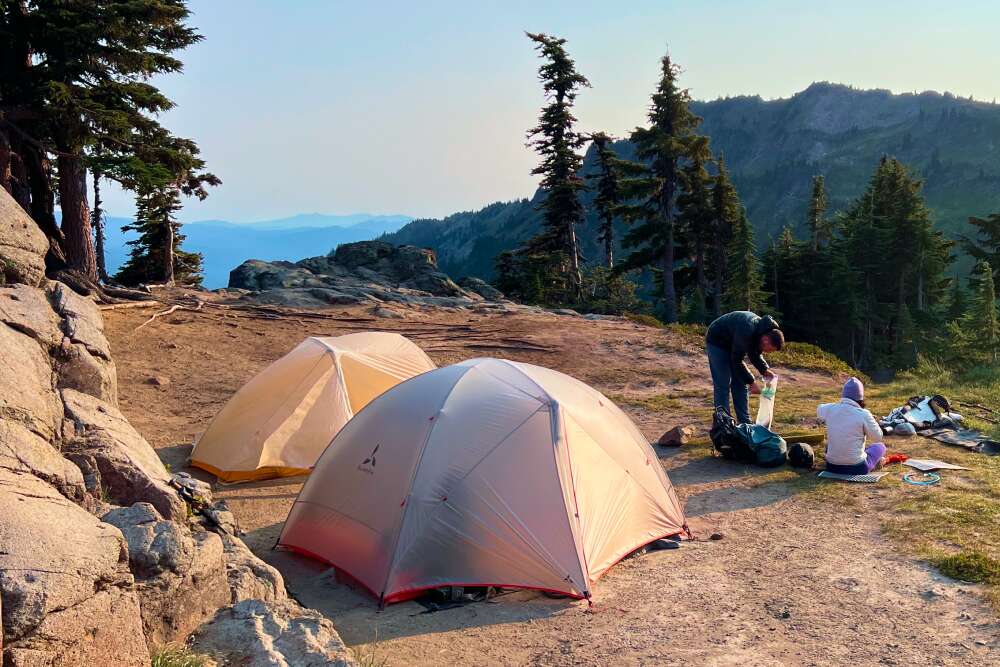
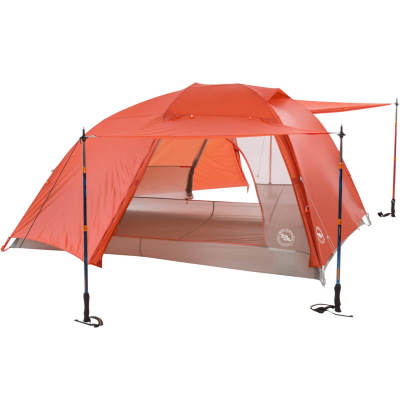
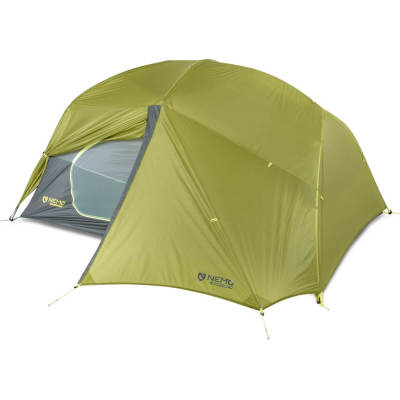
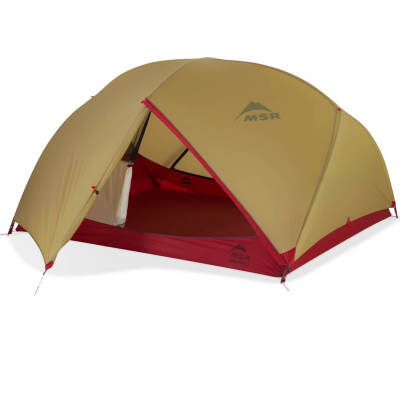
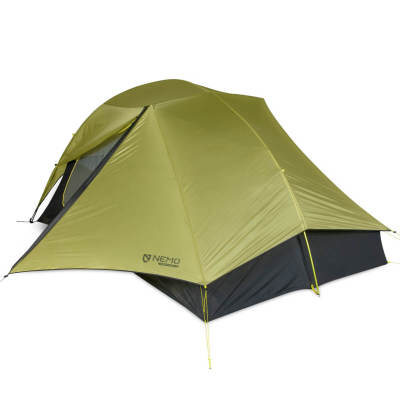
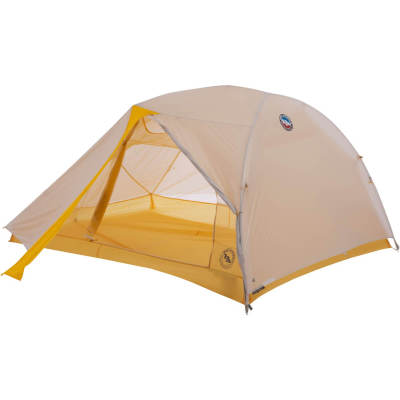
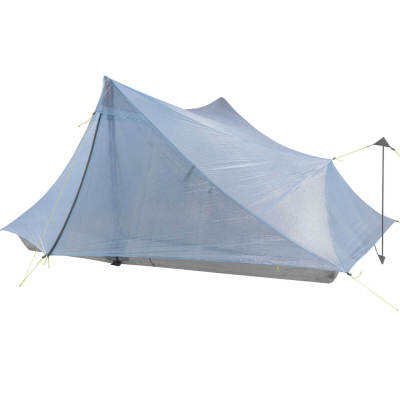
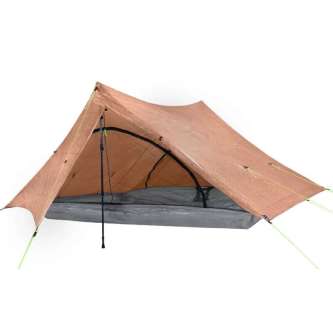
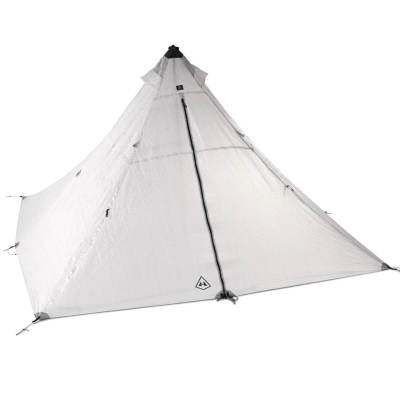
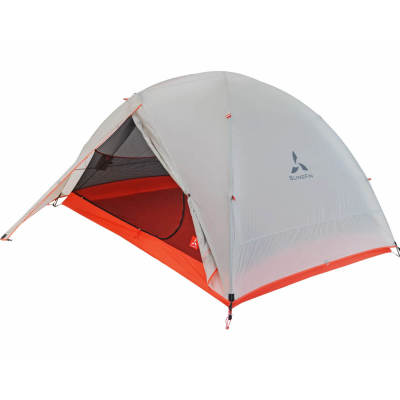
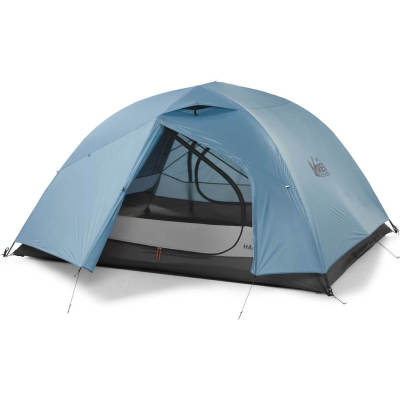
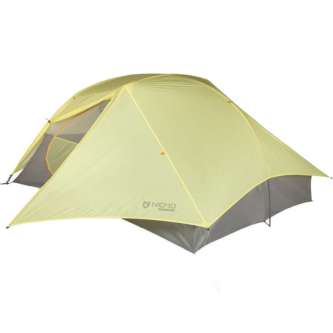
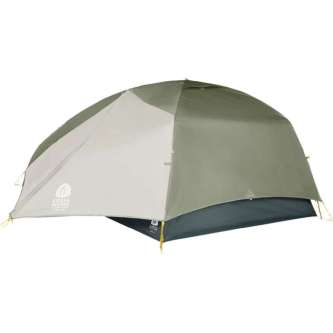
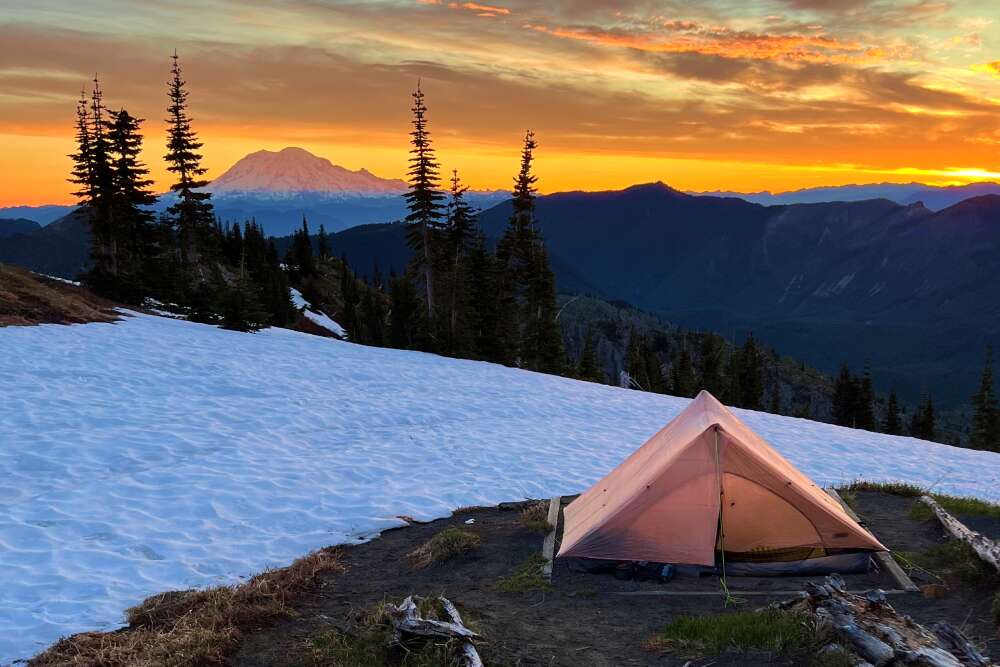
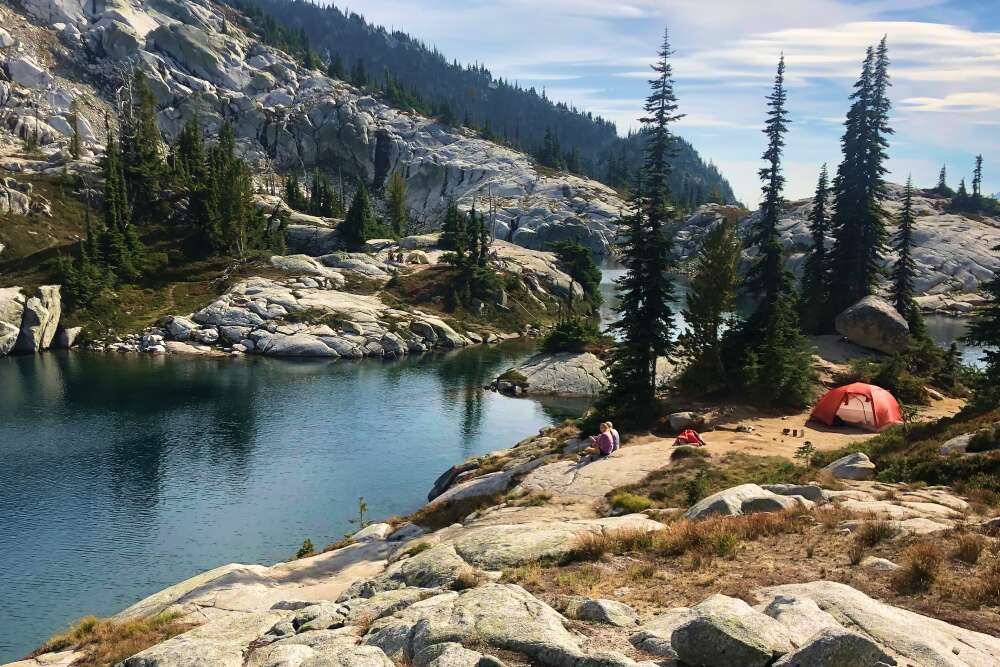
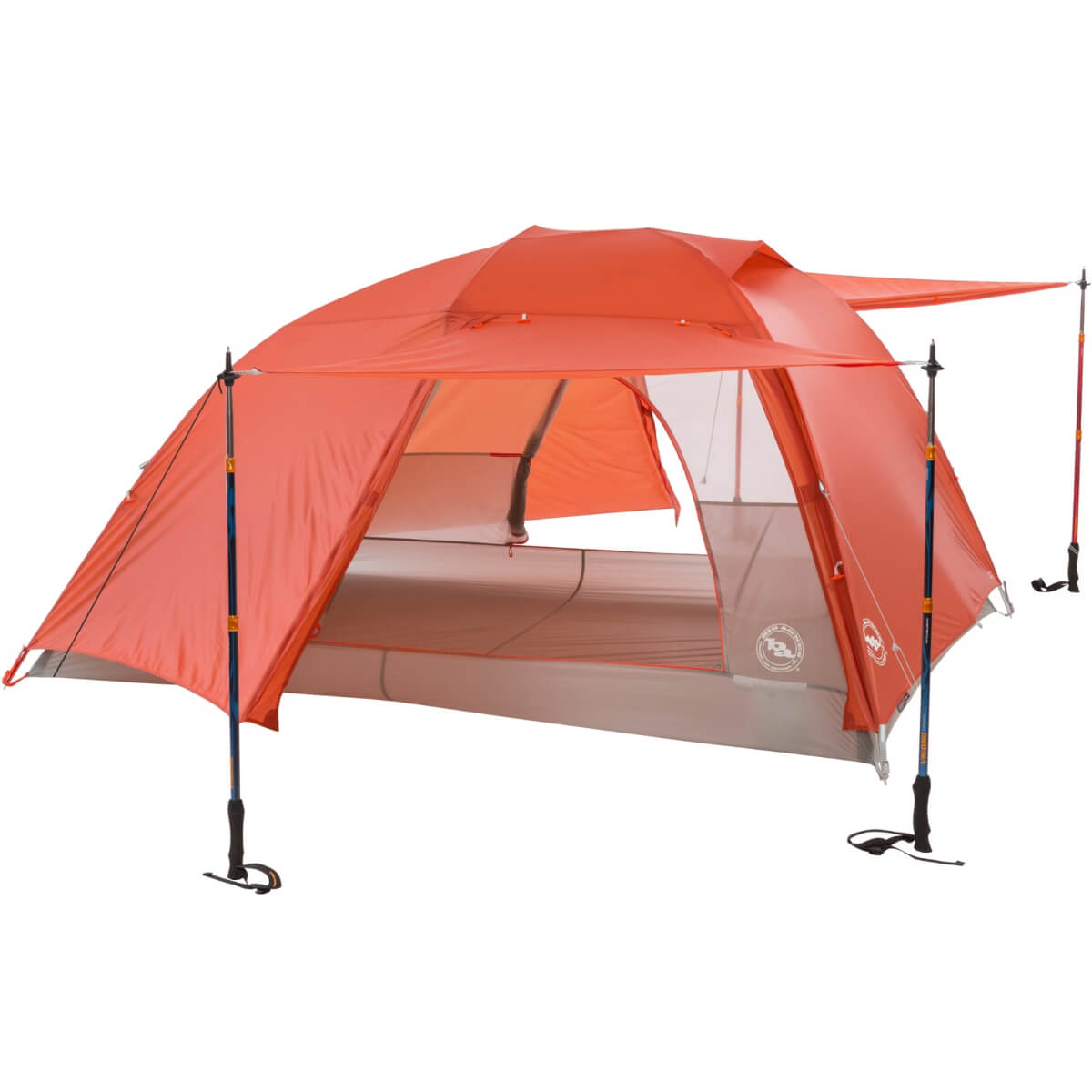
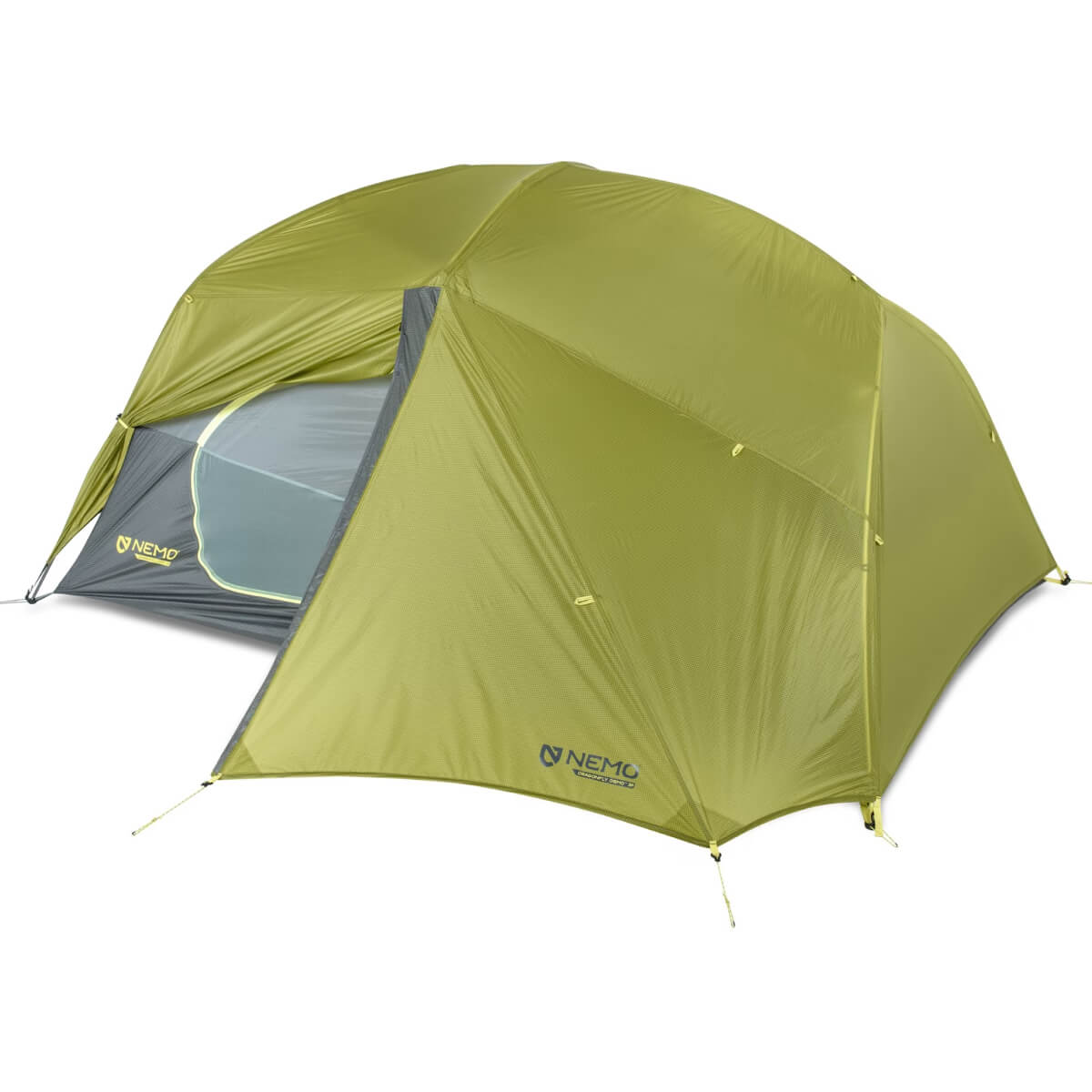
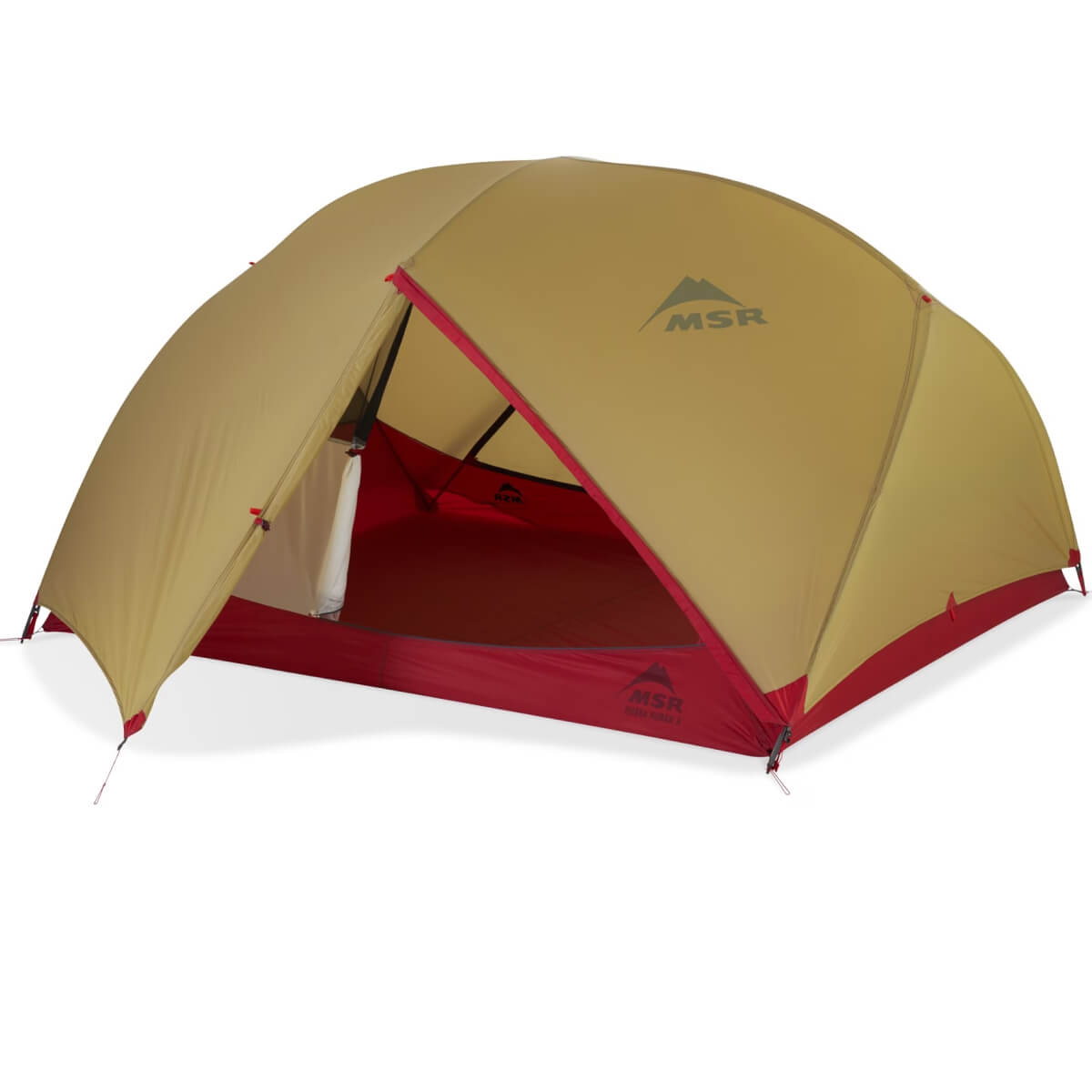
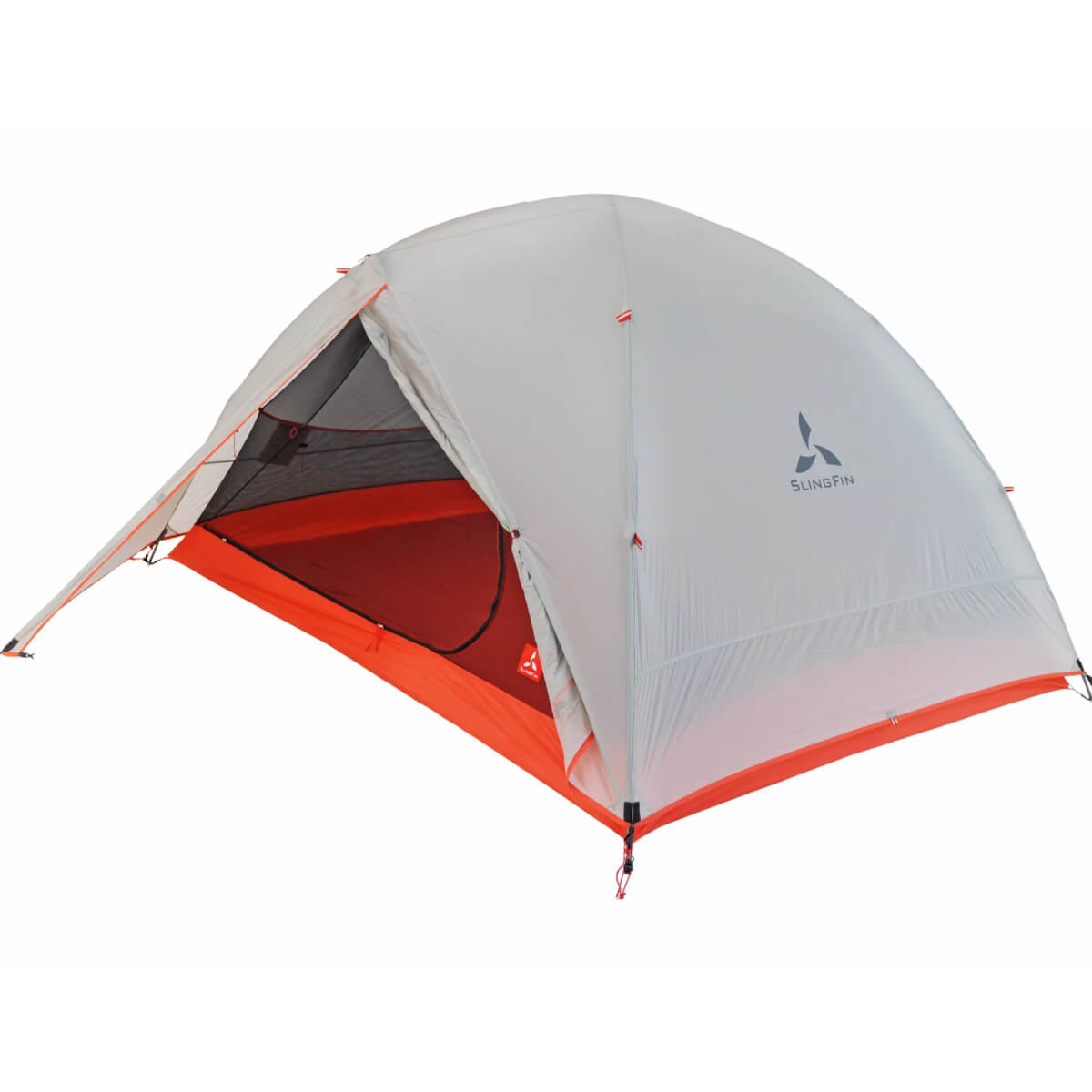
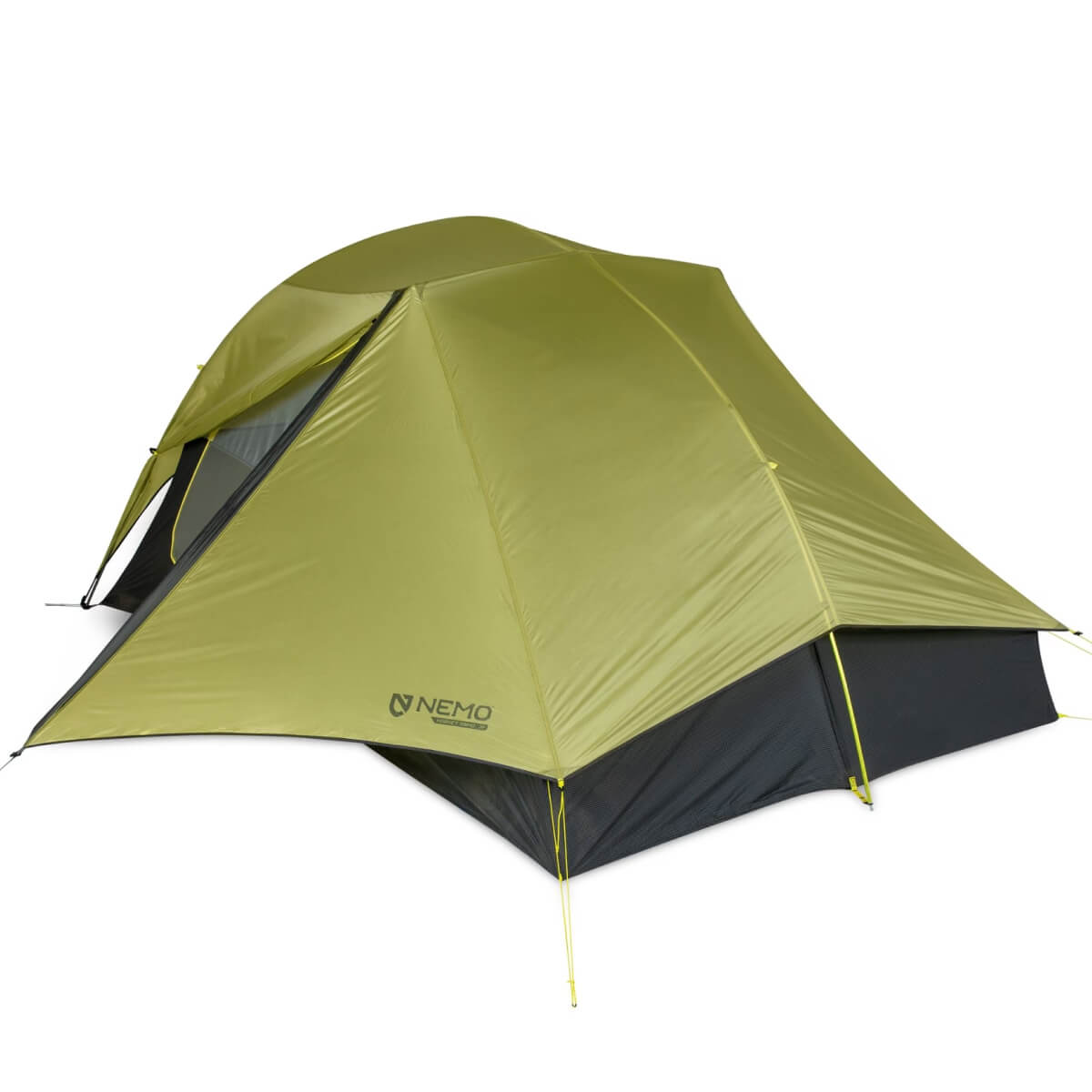
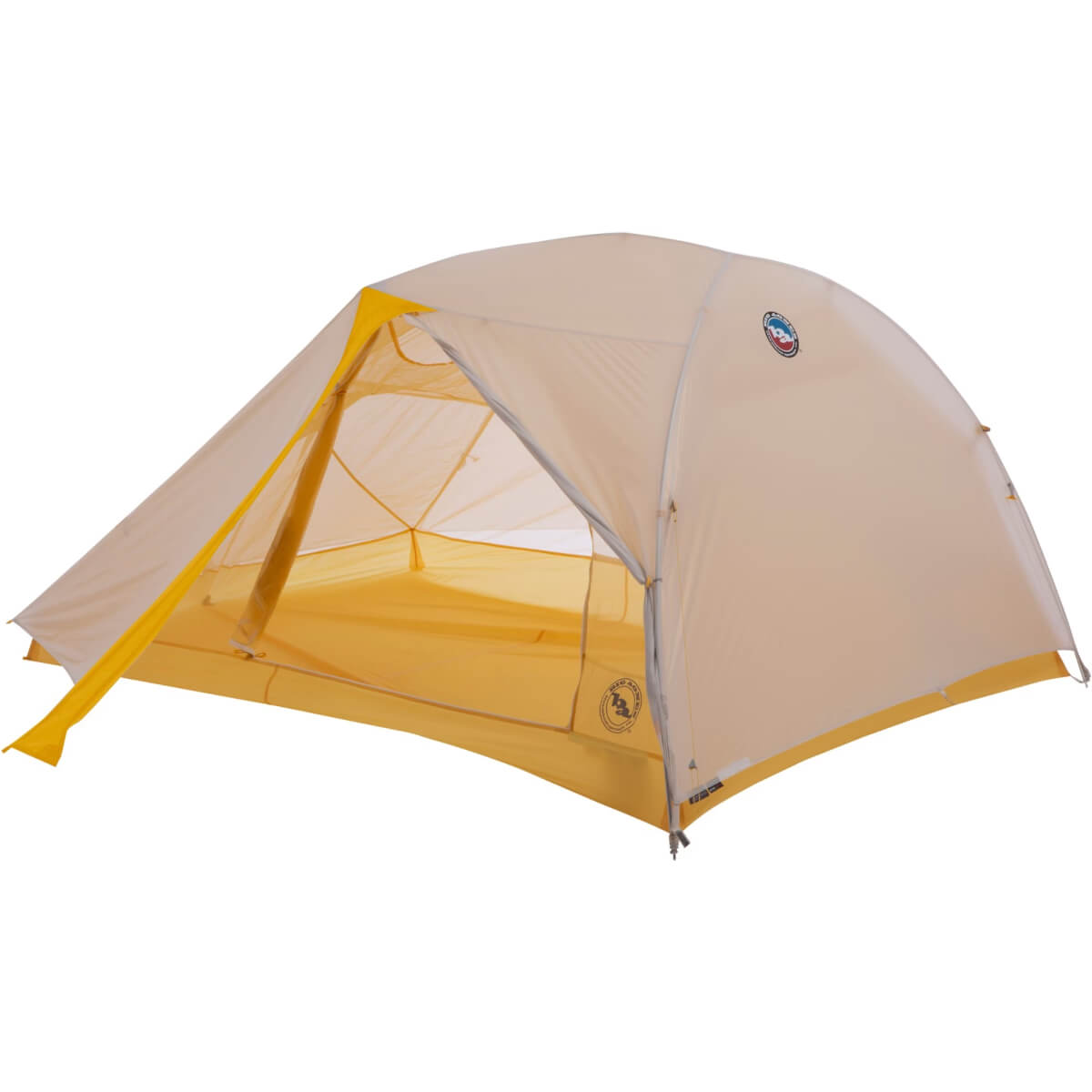
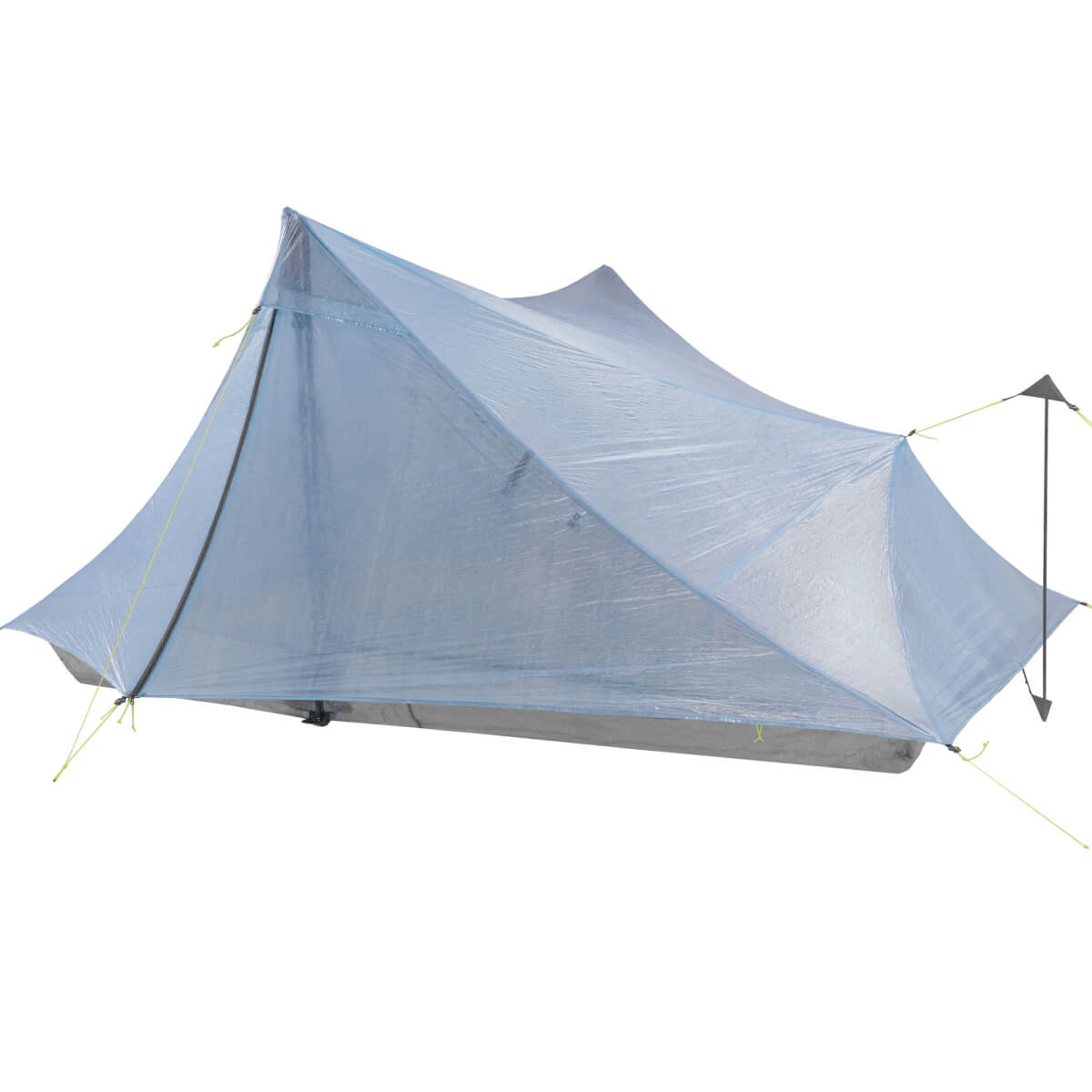
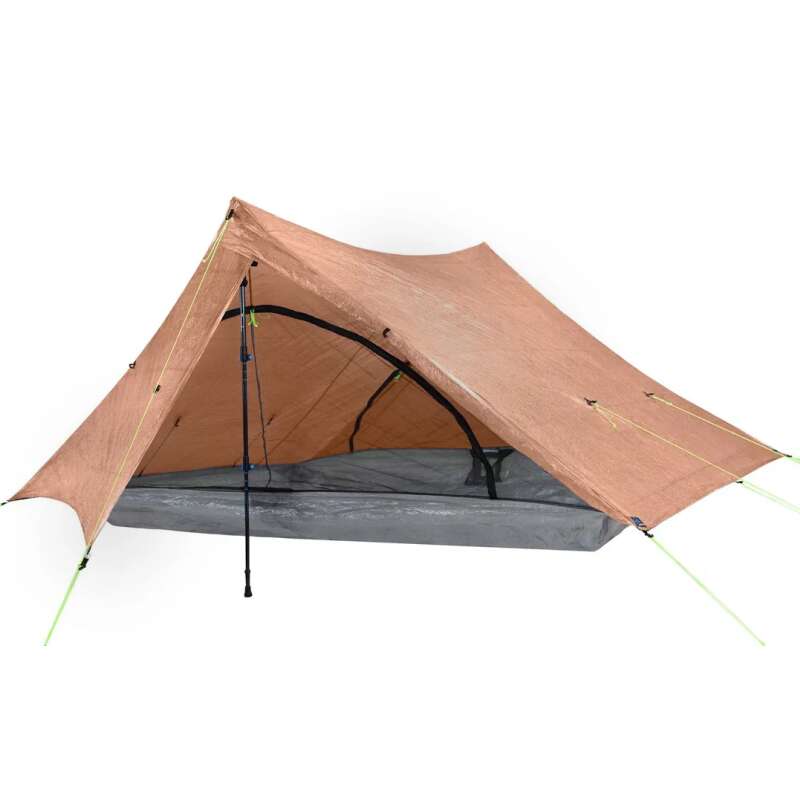
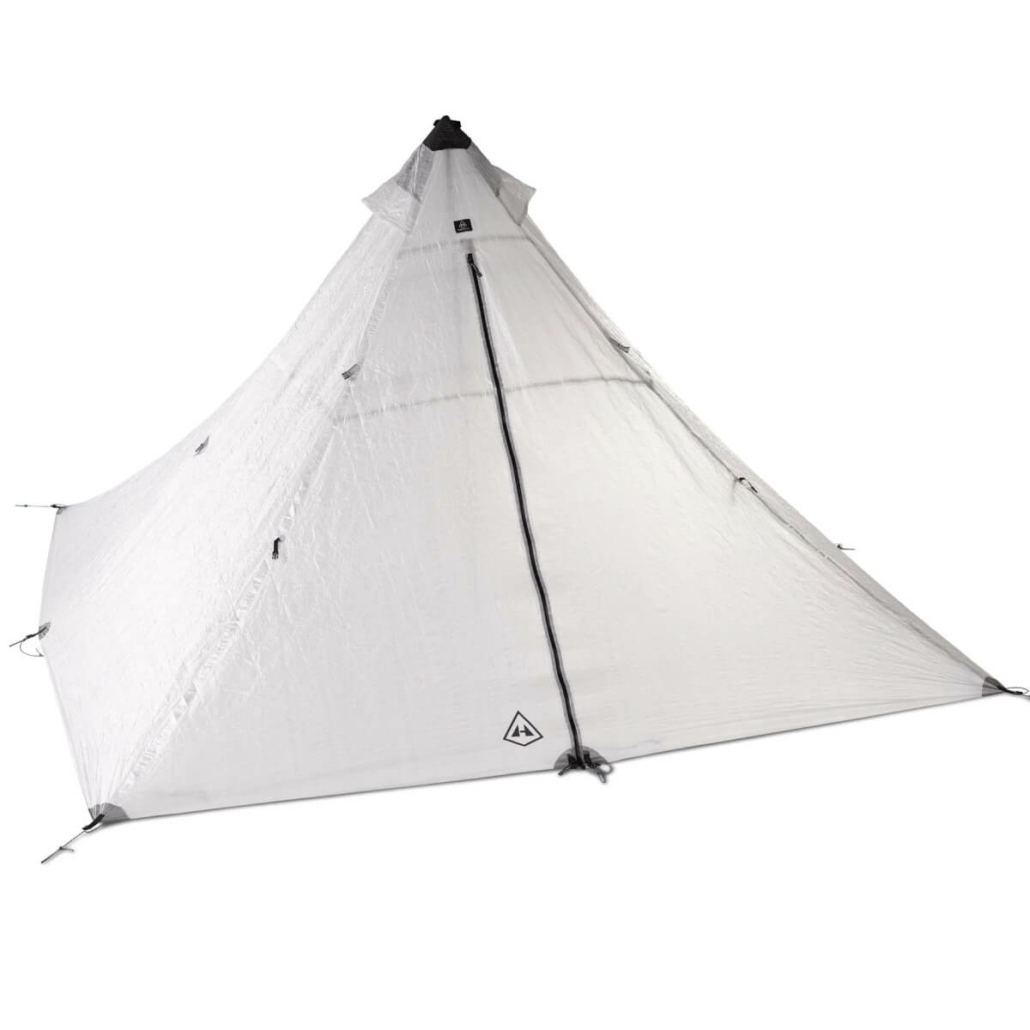
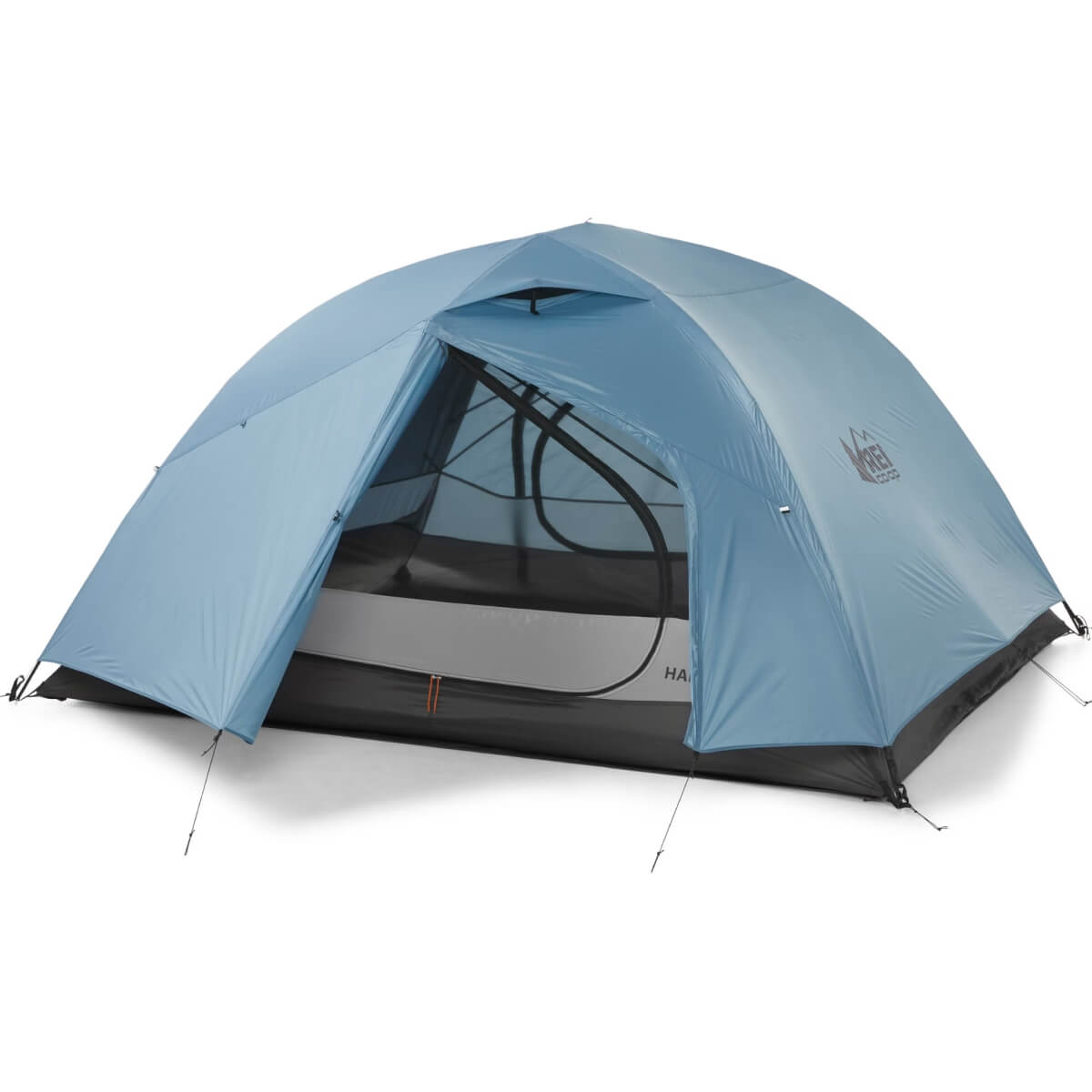
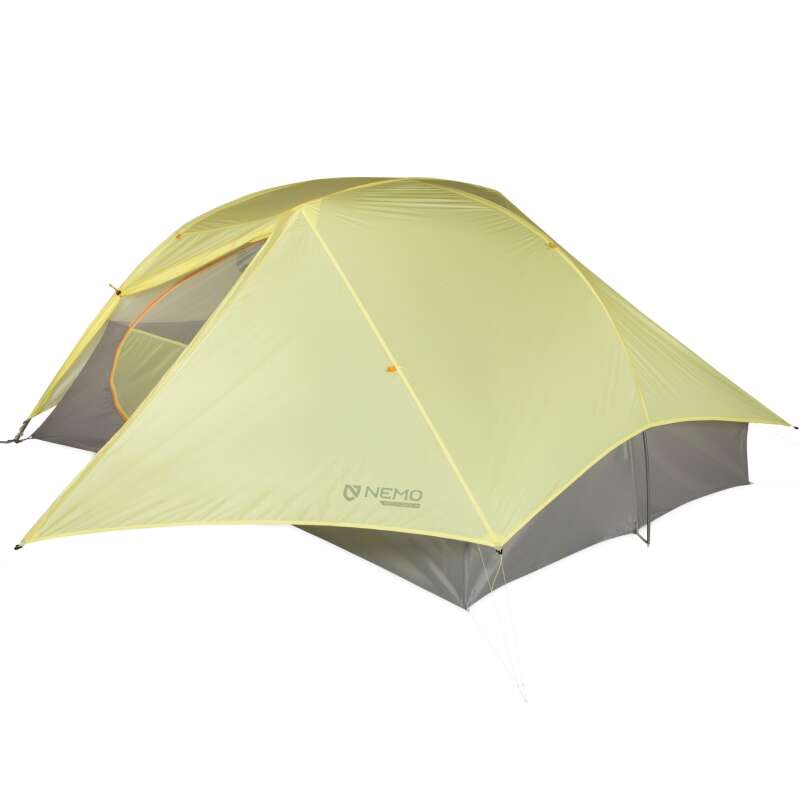
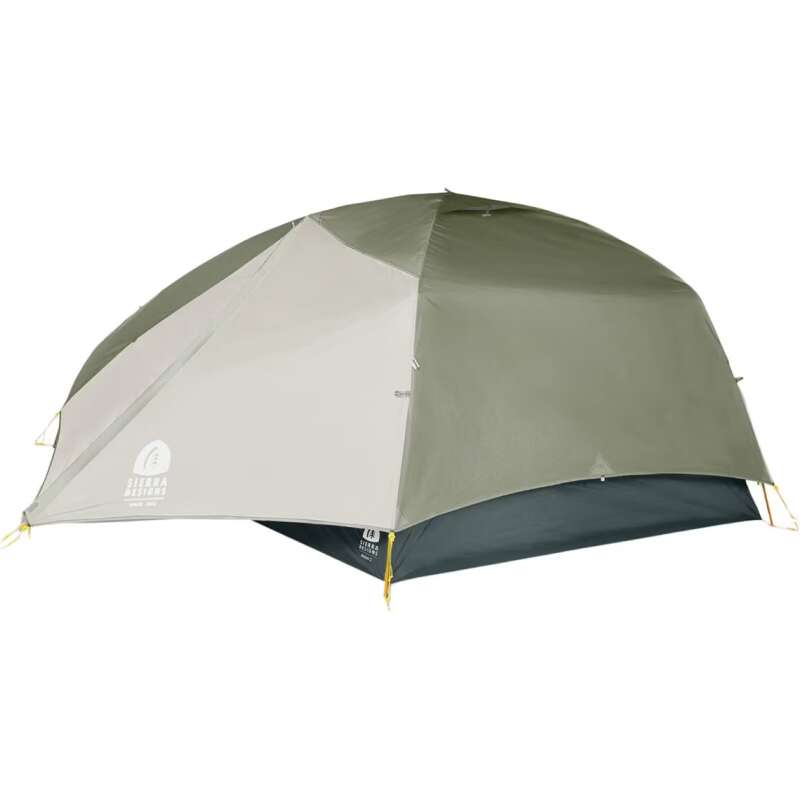
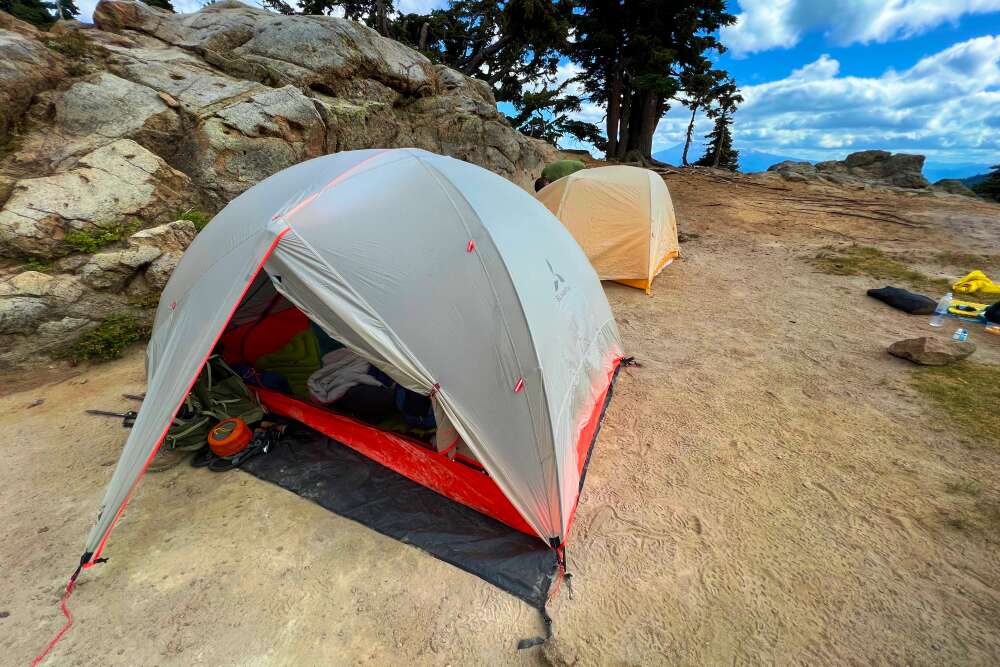


Leave a Reply
Want to join the discussion?Feel free to contribute!